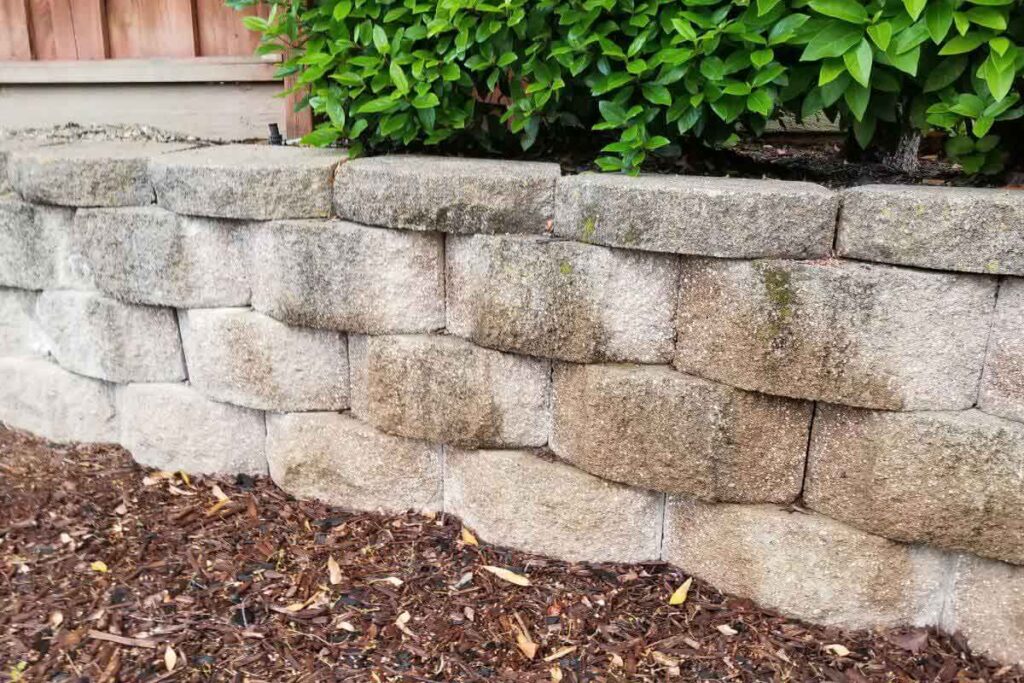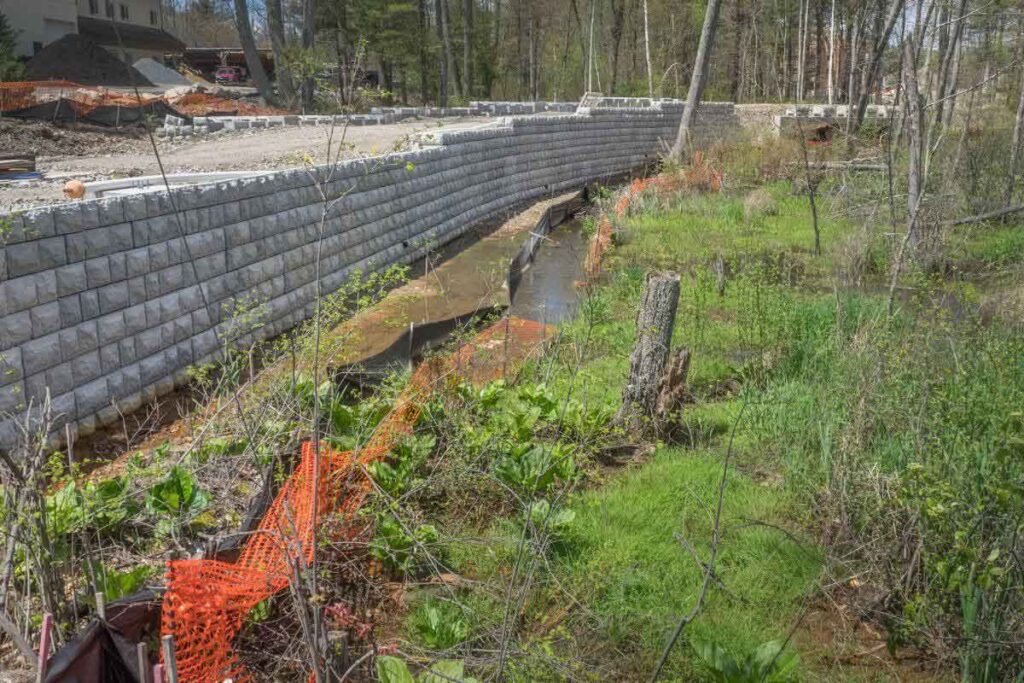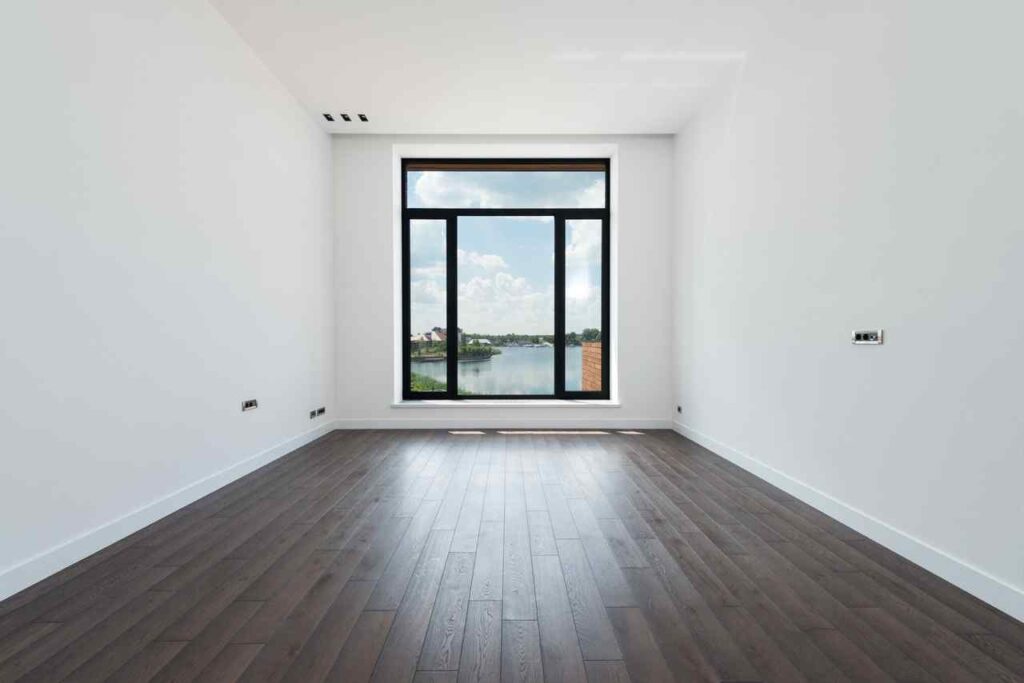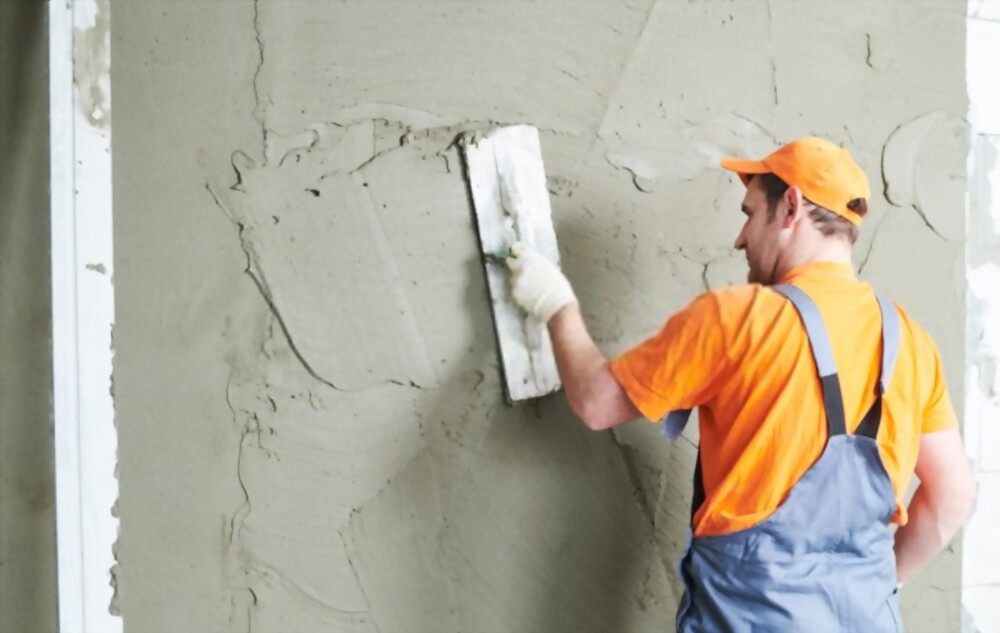A retaining wall serves a vital role in both functional and aesthetic aspects of landscapes. These structures are designed to support and retain soil, preventing erosion, and maintaining the stability of slopes or elevated areas. Retaining walls are commonly used in various settings, including residential properties, commercial developments, and public spaces. Their importance extends beyond mere structural support, as they also contribute to the overall beauty and usability of outdoor spaces.
The purpose of this blog is to address the common problems that arise with retaining wall and provide effective solutions to tackle them. Retaining walls, like any other structure, can encounter issues over time that may compromise their functionality and structural integrity. By understanding these problems and their remedies, property owners, contractors, and enthusiasts can take proactive measures to ensure the long-lasting performance of retaining walls. Whether you are facing soil erosion, cracks, leaning, vegetation growth, or water seepage, this comprehensive guide will equip you with expert insights and practical tips to overcome these challenges.
With a focus on problem identification, solution implementation, and preventive measures, this blog aims to empower readers with the knowledge and resources needed to address common retaining wall issues. By following the guidance provided, you can preserve the beauty of your landscape, enhance the safety of your property, and ensure the longevity of your retaining walls.
So let’s delve into the world of retaining wall, explore the common problems that can arise, and discover effective strategies to fix them. Together, we will navigate through the challenges and find innovative solutions to maintain the structural integrity and functionality of these crucial landscape features.
Soil Erosion behind the Retaining Wall
How soil erosion can affect the stability of the wall?
Soil erosion behind a retaining wall can pose a significant threat to its stability and overall effectiveness. When soil erodes, it gradually weakens the support system behind the wall, causing potential shifts or even collapse. retaining wall erosion can occur due to various factors such as heavy rainfall, poor drainage, inadequate compaction, or improper construction techniques. Over time, if left unaddressed, the erosion can compromise the structural integrity of the retaining wall and lead to costly repairs or reconstruction.
Possible causes of soil erosion
- Insufficient drainage: When water accumulates behind the retaining wall without proper drainage systems in place, it exerts excessive pressure on the soil, leading to erosion.
- Inadequate compaction: Improperly compacted soil during the construction of the retaining wall can create gaps and voids, allowing water to penetrate and erode the soil.
- Lack of erosion control measures: Without erosion control measures, such as vegetation or retaining wall backfill, the soil can easily wash away during rainfall or irrigation.
Solutions
- Installing proper drainage systems
To mitigate soil erosion behind the retaining wall, implementing effective drainage systems is crucial. The drainage system helps redirect excess water away from the wall, relieving the hydrostatic pressure that contributes to erosion. Consider the following drainage options:
- Weep holes: Creating small openings or weep holes at the base of the retaining wall allows water to drain out, preventing water buildup behind the wall.
- Perforated pipes: Installing perforated pipes behind the retaining wall facilitates proper drainage by collecting and channeling water away from the wall.
- Adding geotextile fabric
Geotextile fabric can be an invaluable addition to prevent soil erosion behind the retaining wall. Placing the fabric against the backfill soil helps retain fine particles while allowing water to pass through. This fabric acts as a filter, preventing soil loss and enhancing drainage efficiency.
- Reinforcing the wall with anchor systems
In cases where soil erosion is severe or ongoing, reinforcing the retaining wall with anchor systems can provide additional stability and prevent further erosion. Helical anchors or tiebacks are commonly used to anchor the wall to more stable soil layers, minimizing the risk of shifting or collapse. Professional engineers or contractors can assess the situation and determine the most appropriate anchor system based on the specific needs of your retaining wall.

Cracks in the Retaining Wall
Different types of cracks and their implications
Cracks in a wall not only compromise its aesthetic appeal but can also indicate underlying structural issues. Understanding the types of cracks and their implications is essential for effective repair and maintenance.
- Hairline cracks: These thin, superficial cracks are common and typically do not pose immediate structural concerns. However, if left unaddressed, they can widen over time, allowing water penetration and potential damage.
- Vertical cracks: Vertical cracks can indicate settlement or uneven pressure distribution. They may require careful evaluation, as they could be a sign of foundation movement or inadequate reinforcement.
- Horizontal cracks: Horizontal cracks can indicate excessive soil pressure or inadequate reinforcement. These cracks should be addressed promptly, as they may indicate compromised structural integrity.
- Stair-step cracks: Stair-step cracks typically occur in masonry retaining walls and follow a diagonal pattern. These cracks may indicate differential settlement or shifting of the wall and should be examined by a professional.
Causes of cracks
- Settling of the foundation: Uneven settling of the foundation can result in cracks as the wall adjusts to the movement of the soil.
- Poor construction techniques: Inadequate reinforcement, improper mixing of materials, or insufficient curing time during construction can lead to structural weaknesses and subsequent cracking.
- Thermal expansion and contraction: Fluctuations in temperature cause materials to expand and contract, resulting in stress on the retaining wall and the potential for cracks to develop.
Solutions
- Filling and sealing cracks
For minor cracks, filling and sealing can prevent further water infiltration and minimize damage. Use an appropriate sealant or epoxy-based filler designed for masonry or concrete surfaces. Clean the crack thoroughly, ensuring it is free of debris, and apply the filler according to the manufacturer’s instructions.
- Installing crack control joints
Incorporating crack control joints in new walls or during major repairs can help manage crack formation. These joints, created by installing grooves or lines in the wall, provide areas for controlled cracking, reducing the likelihood of random cracks that compromise the wall’s structural integrity.
- Seeking professional repair if the cracks are severe
For significant cracks or if there are concerns about the structural stability of the wall, it is crucial to consult a professional contractor or engineer. They can assess the severity of the cracks, identify the underlying causes, and recommend appropriate repair methods. Severe cracks may require specialized repair techniques such as reinforcing the wall with steel beams or conducting a complete reconstruction.
Leaning or Tilting Retaining Wall
Why a wall may lean or tilt?
A wall may lean or tilt when it fails to withstand the forces acting upon it. The wall’s ability to resist the pressure exerted by the soil behind it is compromised, leading to movement and potential instability. Understanding the reasons behind the wall movement is crucial for implementing effective solutions.
Causes of wall movement:
- Poor drainage: Inadequate drainage can result in the buildup of water pressure behind the retaining wall. This hydrostatic pressure pushes against the wall, causing it to lean or tilt.
- Excessive soil pressure: When the soil behind the wall exerts excessive pressure, it can overpower the retaining walls ability to resist the force. This can occur due to inadequate soil compaction, poor construction techniques, or the presence of expansive soils.
- Insufficient reinforcement: If a wall is not properly reinforced, it may lack the necessary strength to resist the lateral forces imposed by the soil. Inadequate reinforcement can lead to wall movement and potential failure.
Solutions:
- Assessing and improving drainage systems
Addressing poor drainage is crucial for stabilizing a leaning or tilting retaining wall. Ensure that proper drainage systems, such as weep holes or drainage pipes, are installed to alleviate hydrostatic pressure. Clear any obstructions that may impede water flow and consider incorporating gravel or aggregate backfill to enhance drainage efficiency.
- Installing additional support with helical anchors or tiebacks
For retaining walls experiencing significant movement, installing additional support systems can help counteract the forces causing the lean or tilt. Helical anchors or tiebacks can be inserted into the soil behind the wall, providing lateral reinforcement. These support systems help distribute the soil pressure more evenly and stabilize the wall.
- Rebuilding the retaining wall if necessary
In severe cases where the retaining wall’s integrity is compromised beyond repair, rebuilding the wall may be the most appropriate solution. This allows for a fresh start with proper design, construction techniques, and reinforcement to ensure the stability and longevity of the new wall. Engaging the services of a professional contractor or engineer is essential for the proper evaluation, design, and execution of the rebuilding process.
Learn More: How to Choose the Right Brick Pointing Contractor in NYC

Vegetation Growth and Root Damage
How vegetation can impact the stability of retaining walls?
While vegetation can enhance the beauty of a landscape, it can also pose a threat to the stability of retaining walls. The roots of plants can exert significant pressure against the wall, leading to cracks, shifting, and even collapse. Understanding the potential impact of vegetation growth is crucial for maintaining the long-term integrity of retaining walls.
Common plant species that cause problems
Certain plant species are more likely to cause issues when planted near retaining walls. These species have aggressive root systems that can penetrate the wall structure and exert excessive pressure. Common culprits include:
- Bamboo: Bamboo plants have spreading rhizomes that can quickly infiltrate the soil and grow into dense clumps, exerting significant pressure against the retaining wall.
- Willow trees: Willow trees have extensive root systems that aggressively seek water sources. As a result, they can cause soil displacement and damage to retaining walls.
- English ivy: While English ivy is admired for its aesthetic appeal, its clinging rootlets can penetrate and undermine the stability of retaining walls.
Solutions
- Removing vegetation and roots
To address existing vegetation growth near a retaining wall, it is essential to remove the plants and their roots. Dig around the base of the plants and carefully extract as much of the root system as possible. Be cautious to avoid damaging the wall during this process. Proper disposal of the plant material is crucial to prevent re-growth.
- Installing root barriers
Installing root barriers can help prevent future root damage to retaining walls. These barriers are made of durable materials, such as high-density polyethylene, that can be placed vertically along the wall’s length. The barrier acts as a physical barrier, preventing roots from infiltrating the soil behind the wall and exerting pressure.
- Choosing appropriate plants for landscaping near retaining walls
When planning your landscaping, consider selecting plant species with non-invasive root systems. Opt for plants that have shallow, fibrous roots instead of deep taproots or aggressive spreading roots. Consult with a knowledgeable landscaper or horticulturist who can recommend suitable plant options that will not pose a threat to your retaining wall.
Water Seepage and Hydrostatic Pressure
How water can damage retaining walls?
Water can be a significant threat to the stability and integrity of retaining walls. When water seeps into the soil behind the wall or accumulates around its base, it can exert hydrostatic pressure. This pressure pushes against the wall, causing potential damage such as cracks, bulging, or even complete failure. Understanding how water can impact retaining walls is crucial for effective solutions.
Causes of water seepage
- Inadequate drainage: Insufficient or poorly designed drainage systems can result in water buildup behind the retaining wall. Without proper drainage, water becomes trapped, leading to increased hydrostatic pressure and potential damage.
- Poor waterproofing: If the retaining wall lacks proper waterproofing measures, water can infiltrate the wall itself, saturating the materials and increasing the likelihood of deterioration and weakening.
- Hydrostatic pressure buildup: Hydrostatic pressure occurs when water accumulates behind the retaining wall. The weight and force of the water exert pressure against the wall, which can cause it to shift, crack, or fail.
Solutions
- Ensuring proper drainage systems are in place
To address water seepage, it is crucial to have adequate drainage systems installed. Consider the following options:
- French drains: A French drain is a trench filled with gravel or rock and a perforated pipe. It collects water and directs it away from the retaining wall, reducing hydrostatic pressure.
- Gravel or aggregate backfill: Using a layer of gravel or aggregate as a backfill behind the retaining wall promotes efficient water drainage, preventing water buildup.
- Waterproofing the wall with sealants or membranes
Applying waterproofing sealants or membranes to the retaining wall can help prevent water penetration and damage. These products create a barrier that keeps water from infiltrating the wall, preserving its structural integrity. Ensure the chosen waterproofing solution is suitable for the specific wall material and follow the manufacturer’s instructions for proper application.
- Installing weep holes or drainage pipes to relieve hydrostatic pressure
Weep holes or drainage pipes can be incorporated into the retaining wall to relieve hydrostatic pressure. Weep holes are small openings or gaps left in the wall at regular intervals to allow water to drain out. Drainage pipes can be installed behind the wall to collect and redirect water away from the wall, reducing pressure buildup.
Final Thoughts
Retaining walls are essential for maintaining the stability and integrity of landscapes with varying elevations. However, they can experience common problems such as soil erosion, cracks, leaning, vegetation growth, and water seepage. By identifying these issues early on and implementing the appropriate solutions discussed in this guide, you can ensure the long-term functionality and structural soundness of your retaining walls. If you encounter severe problems or have concerns about the stability of your retaining wall, it is advisable to consult a professional contractor or engineer who can provide expert guidance and assistance.
At Hi Tech Contracting & Restoration Corp, we specialize in retaining wall services in New York City. Our team of experienced professionals is well-versed in diagnosing and resolving common retaining wall issues. Whether you need repairs, reinforcement, or a complete reconstruction, we have the expertise to ensure the optimal performance and longevity of your retaining walls. With our commitment to quality craftsmanship and attention to detail, you can trust us to deliver reliable solutions tailored to your specific needs.
Don’t let common problems with retaining walls jeopardize the safety and aesthetics of your property. Contact Hi Tech Contracting & Restoration Corp today for expert retaining wall services in New York City and let us help you maintain the beauty and functionality of your landscape for years to come.
Read More: The Pros and Cons of Metal Roofing in New York City
Social




